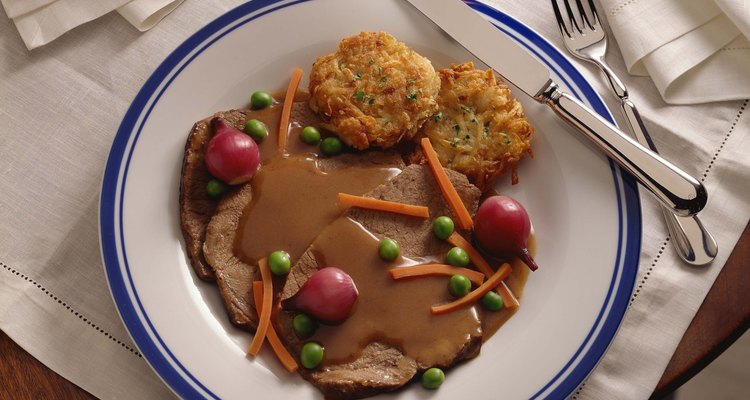
Pot roast is an inexpensive, comforting meal, the perfect dinner on a cold winter night. For those new to cooking, however, pot roast can be tricky. If you don't know what cut of meat to use, how to prepare it, and what cooking temperature to use, you're likely to end up with an underdone or burned roast. It doesn't have to to be that way. Learn a few basic rules and you can turn out perfect pot roast every time.
Choose the Right Cut
The first thing you need to do when you make pot roast is to choose the right meat. Author and Food Network star Alton Brown recommends beef chuck, which comes from the shoulder of the animal. This cut contains a lot of connective tissue which, when cooked properly, becomes deliciously moist and tender. If you'd like to use pork, choose picnic shoulder, also known by the misnomer "pork butt."
Sear the Meat
Despite cooking lore to the contrary, searing meat does not seal in juices. Searing does, however, create hundreds of flavor compounds and vastly improves the texture of almost any meat. To sear chuck or pork shoulder, place a heavy stainless steel or cast iron pan over high heat, brush the meat with canola oil, and add the meat to the pan once the pan is hot. Cook for at least two minutes per side, or until it is deep brown. The meat is ready when it releases itself from the hot cooking surface.
Cook Low and Slow
Braise your roast -- a cooking method characterized by long, low, moist covered cooking. Unlike steaks, which should not be cooked past 150 degrees, pot roast must be heated to between 160 to 180 degrees F to dissolve collagen into gelatin. If done quickly, these temperatures are high enough to dry out the meat, but if you cook your pot roast at 200 to 250 degrees for several hours, the meat's internal temperature will rise slowly enough for the dissolving gelatin to catch and retain moisture.
Cook to Temperature
Cooking to temperature means relying on the internal temperature of the meat, rather than cooking time, to determine doneness. Though you can check your meat's temperature periodically with an instant-read meat thermometer, a probe-style thermometer designed to remain in the meat during cooking is more accurate and convenient. Whatever type of thermometer you use, insert it into the deepest part of the meat without touching any bones, which would throw off the reading.
Rest the Meat
Resting -- allowing the meat to sit prior to cutting -- is the single most important step in cooking pot roast. When meat is exposed to the heat of the oven, that heat forces juices into the center of the meat. If you were to cut the meat straight out of the oven, those juices would escape, leaving you a dry roast on top of a puddle. Resting the meat for at least 10 minutes, covered with aluminum foil to keep it from cooling off too fast, allows the meat fibers to relax so that they can hold onto juices when cut.
Related Articles

How to Cook a Beef Roast in a Roaster ...
How to Slow Cook a Pot Roast With Beef ...
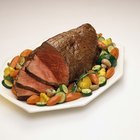
How to Cook a Roast Beef to a Perfect ...
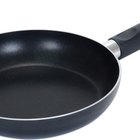
How to Cook Beef Top Round Pot Roast

What Are the Temperatures for Slowly ...

How to Use an Electric Roaster to Slow ...
How to Cook a Spencer Roast

How to Slow-Cook Meat in the Oven
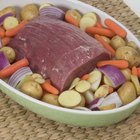
How to Make Bottom Round Roast Melt in ...

What Is a Picnic Roast?
How to Cook a Steakhouse Roast
How to Cook Boneless Top Chuck Steak in ...

How to Cook Beef Shoulder Muscle

How to Get Skirt Steak Tender
What is the Best Meat for Pot Roast?
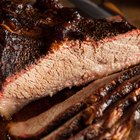
How to Steam a Brisket of Beef
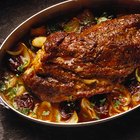
How to Use a Roaster for Pork

How to Make a Blackbuck Antelope Roast
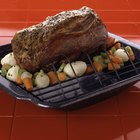
How Long Does a Pot Roast Last After It ...

How to Cook Texas Broil Roast
References
- "I'm Just Here for the Food"; Alton Brown; 2002
- "America's Test Kitchen Companion Cookbook"; The Editors of Cooks Illustrated Magazine; 2007
- "On Food and Cooking, the Science and Lore of the Kitchen"; Harold McGee; 1984
Resources
Writer Bio
Melanie Greenwood has been a freelance writer since 2010. Her work has appeared in "The Denver Post" as well as various online publications. She resides in northern Colorado and she works helping to care for elderly and at-risk individuals. Greenwood holds a Bachelor of Arts in pastoral leadership from Bethany University in California.
Photo Credits
Jupiterimages/Comstock/Getty Images